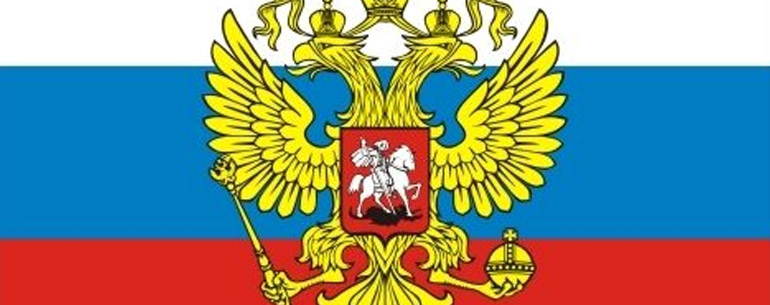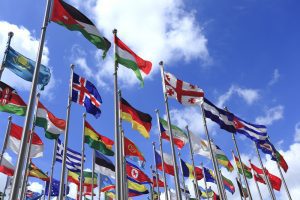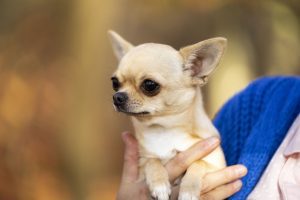Birds have played a strong role in Russian history and culture for centuries. There are, in fact, 808 different species of birds found across the large Eurasian nation, though many are largely found only in certain regions.
Two species of Russian birds are even considered endemic (not found anywhere else in the world).
Unlike many countries, however, Russia does not have an official national bird. Nevertheless, the cultural significance of birds, in general, has resulted in multiple avian symbols.
With this in mind, the most prominent “national birds” of Russia are the eagle, two-headed eagle, and the falcon.
While the eagle and two-headed eagle are often lumped together in terms of Russian national symbols, all three of these birds are sprinkled throughout the country’s culture in visual artwork, coats of arms, and folklore.
Table of Contents
What is the Significance of Eagles in Russia?
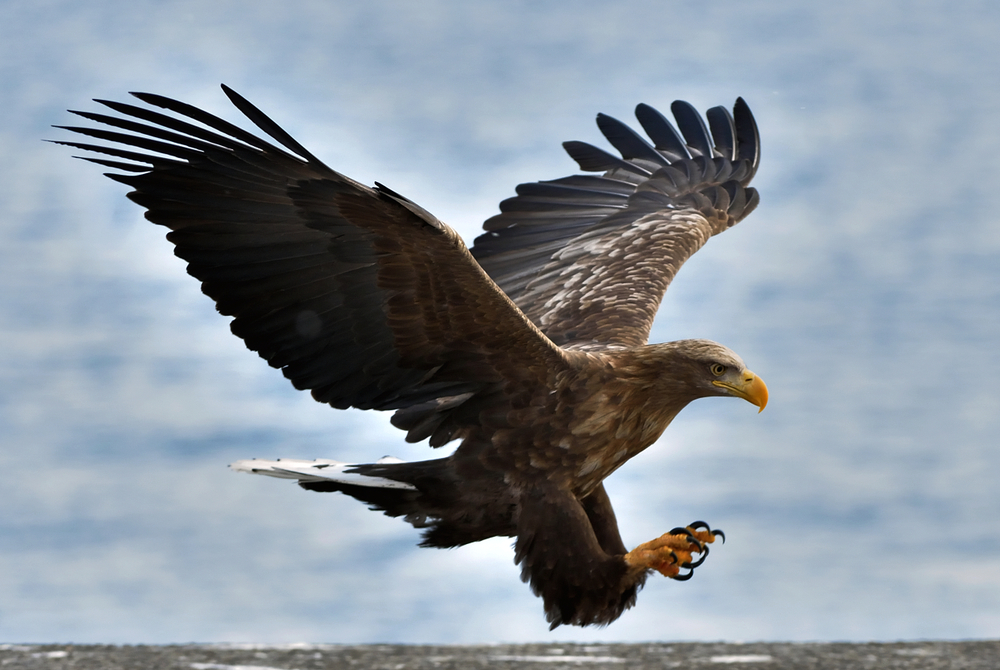
Eagles have long held significance in Russia, both in terms of wildlife and as a mythological creature (hence where the two-headed eagle comes in).
Visitors to Russian government buildings, palaces, or museums will see the bird displayed readily on tapestries, flags, historical garments, paintings, coats of arms, and a wide span of national crests and emblems, often in ornate gold.
They may also be seen on memorials and monuments. A great example is a giant statue of an eagle sitting just outside the railroad station in Oryol, Russia as a symbol of the city.
Appropriately, “Oryol” (also spelled “Orel”) means “eagle” in Russian.
But Oryol’s monument is an exception. Though the symbolism hails from ancient roots, the eagle has endured throughout most of Russian history as an expression of power, sovereignty, and success.
In fact, the only period where the bird was noticeably absent from government emblems, crests, and national artwork was during the Soviet era from 1922 to 1991. It has since reappeared.
Displaying eagles across government and patriotic works isn’t something unique to Russia. Many countries also use the eagle as a national symbol (the United States and its preference for the bald eagle is just one example).
While the bird is sometimes used as part of religious imagery, its recognition is most often in order to convey a nation’s power and dominance.
As Georgy Vilinbakhov, head of Russia’s Heraldic Council, was quoted explaining in an interview, “[The eagle] is the king of birds; just like the lion is believed to rule all animals, and he is associated with the cult of the sun.”
Are Eagles Common in Russian Wildlife?
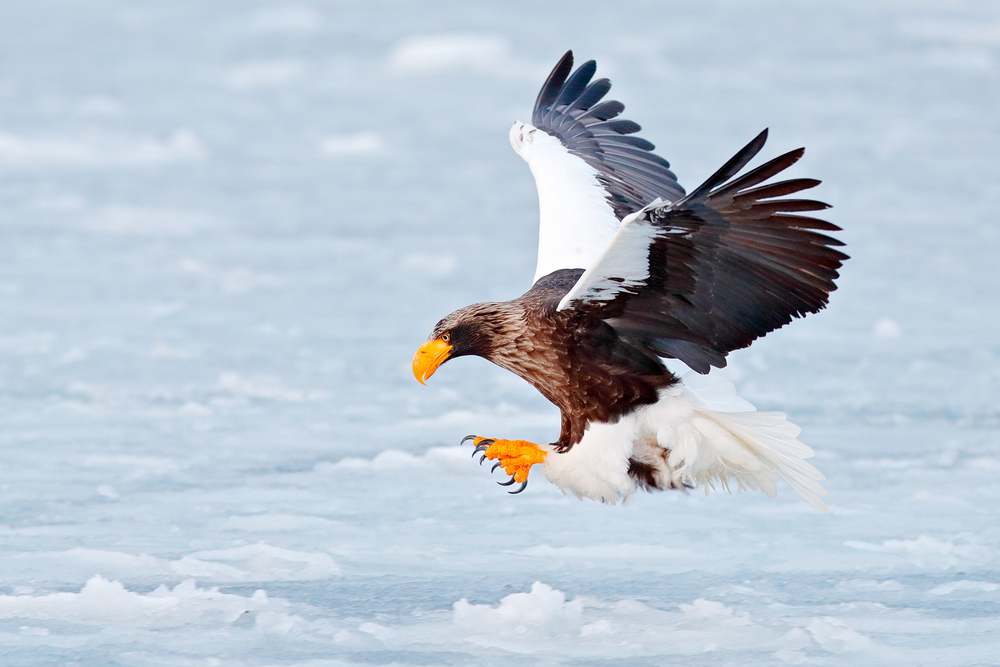
While Russian artistic depictions of the eagle fluctuate between realistic and exaggerated, the real-life bird is relatively easy to distinguish with prominent features that set it apart from other avian species.
It belongs to the Phylum Chordata class of Aves, and there are in fact numerous varieties of eagles.
The term “eagle” itself is actually a commonly used name for many large birds of prey with slightly hooked beaks, significant wingspan, talons, and large eyes.
Eagles also tend to have larger heads than other kinds of birds. Approximately 60 species of eagles are found across Eurasia and Africa alone.
For comparison, just 14 species have been discovered elsewhere (in North America, South America, and Australia).
The most prominent types of eagles found in Russia are the golden eagle, the bald eagle, the white-tailed eagle, the Pallas’ fish eagle (also sometimes called the Pallas’ sea eagle), the imperial eagle, the Steppe eagle, the spotted eagle (divided into lesser and greater subspecies), and the booted eagle.
There’s also the Steller’s sea eagle, a seafaring bird that is noteworthy because it is only found year-round in northeastern Russia – particularly along the Kamchatka Peninsula – and spends winters along the coast of Japan.
The Steller’s Sea eagle also happens to be the heaviest eagle in the world on average, typically falling between 11 and 20 lbs.
While most eagles in Russia stick to less populated areas with higher supplies of their prey (usually fish, rodents, and smaller bird species), it’s also worth noting that some have very expansive migration territories.
In 2019, a group of Russian scientists made headlines for running out of funding money when the eagles they were tracking with SMS transmitters migrated all the way to Iran and Pakistan.
Fortunately, the team’s mobile phone company learned of their dilemma and canceled the charges.
What is the Significance and History of the Two-Headed Eagle in Russia?
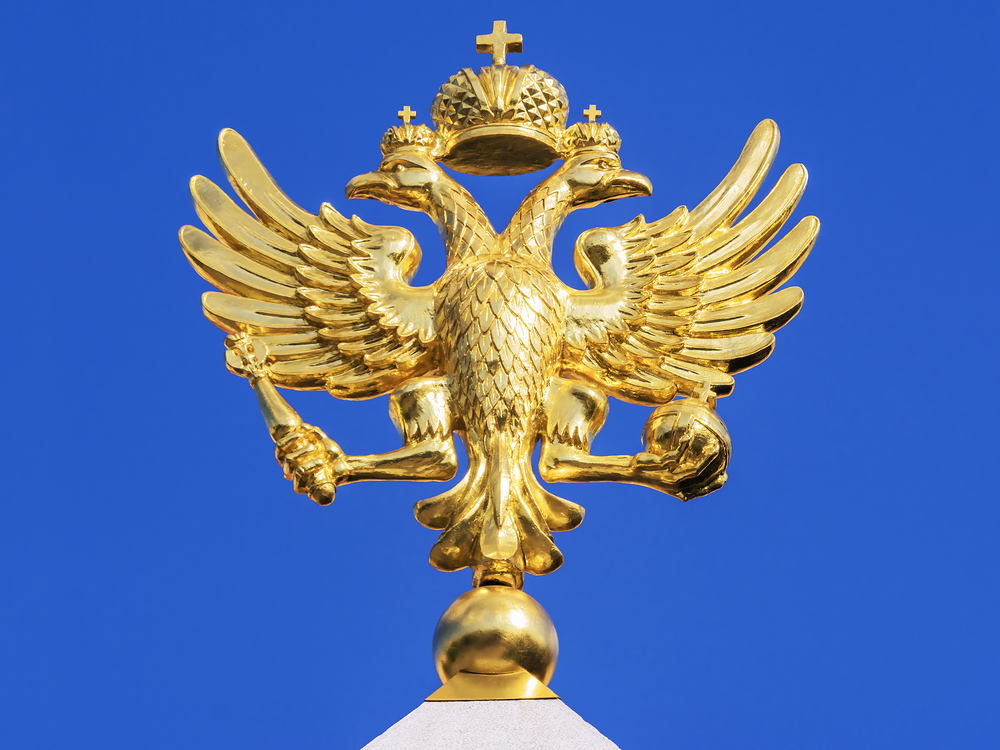
Even more widely used in Russian symbolism than the standard eagle is the two-headed version, often seen with crowns or holding a scepter, cross, or other significant objects in its talons.
While there are different suggestions as to what the two heads can symbolize, they are most commonly described as facing east and west, recognizing the two sides of Russia.
Another theory is that they symbolize ancient empires from which Russia is descended.
The two-headed eagle is, of course, not an actual species of bird in Russia. However, its image is a common sight when looking at both contemporary and past artwork.
When looking back at the czars and other Russian royalty of past centuries, the two-headed eagle was prominently featured on formal court and attire, jewelry, and coronation regalia. Indeed, it dates back much further than that.
The double-headed eagle’s first known appearance in Russia can be traced back to the late 15th century.
The black double-headed eagle was made an official emblem of Russia during the rule of Ivan III Vasilyevich, also known as Ivan the Great.
The exaggerated bird design was also regularly featured in the ornaments and formal attire of the Russian Imperial Court.
When the monarchy was overthrown in 1917, many royal treasures and emblems were lost due to looting and destruction.
Other items featuring royal motifs like the double-headed eagle were later locked away following the establishment of the Soviet Union in 1922, not to be seen again until the 1990s or even later.
The eagle has since regained its prominence in Russian culture, to the point that it is occasionally cited as the country’s national bird. However, it has never officially been designated as such in modern Russia.
Where Else is the Two-Headed Eagle Found Around the World?
Interestingly, Russia is not the first country to associate strongly with the two-headed eagle.
The double-headed bird dates back to at least Ancient Sumeria and Mesopotamia, after which it seemed to fall out of prominence for some time. It reemerged later on and has stayed relatively in the spotlight ever since.
However, much of this is due to the preservation of medieval art. It is possible that there are many other examples of the two-headed eagle that have been lost over time.
Even so, the fictional eagle has been viewed as a symbol of empire and power throughout the world since the Middle Ages.
Most notably, the double-headed eagle is seen in historical Scandinavian art and royal crests, not to mention across a wide realm of empires and states, both past and present: the Byzantine Empire, the Holy Roman Empire, Greece, Islamic Spain, Serbia, and Albania.
The double-headed eagle is also used as a motif in many orthodox churches.
Is There a Triple-Headed Eagle?
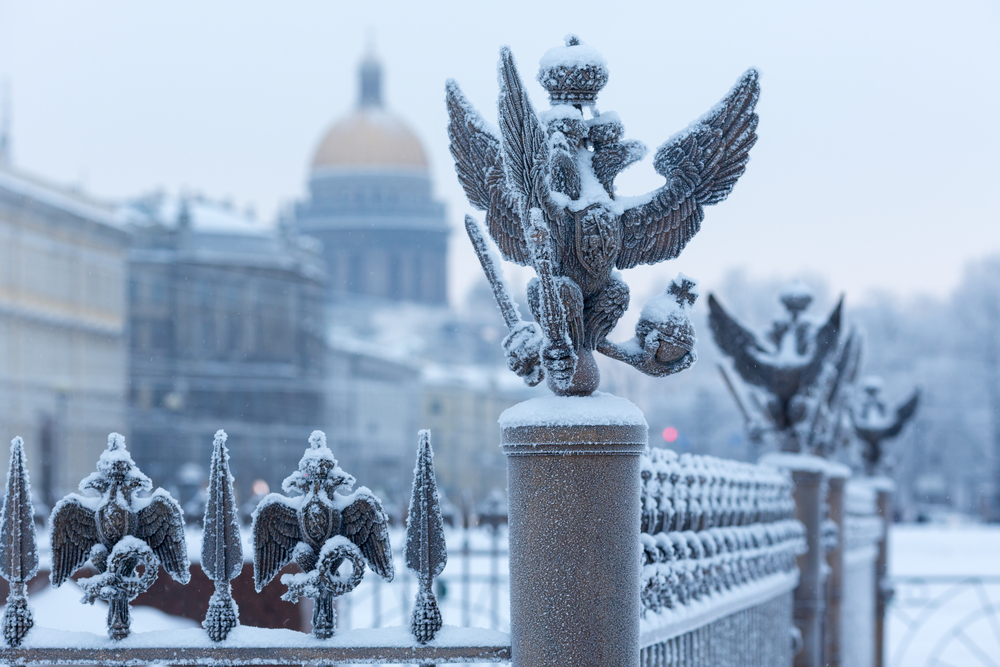
Although the two-headed eagle is the most common sight on the Russian coat of arms, there are some instances of Russian symbolism in which the two-headed eagle has been augmented into an even more striking triple-headed eagle.
It may or may not be accompanied by three wings.
Three-headed eagles are most often seen on the tops of statues and monuments, especially in St. Petersburg (the capital of the Russian Czars from 1713 to 1918).
The dominating theory here however is a simple one – because the three-headed eagles sit atop statues, they are meant to appear as a two-headed eagle from wherever the viewer is standing below.
How is the Falcon a Russian Symbol?

While the eagle and two-headed eagle are typically considered the more prominent out of all the Russian bird symbols, the falcon is also of note.
The bird has appeared in Russian folklore for centuries, including a popular fairytale called “The Feather of Finist the Falcon.”
Perhaps even more notably, the falcon rose like a bird of choice for the Soviet Union while the former gold-plated and black eagle motifs of the Czars were largely locked away or destroyed.
By then regarded as a symbol of unabashed bravery, the falcon appeared on stamps and other simpler emblems of the time.
Members of the Soviet air force were even described as “Stalin’s falcons” by Soviet media (which was state-controlled at the time) and as “Red falcons” by those in other nations.
Along with Russia’s folklore and political history, falcons have long been culturally important thanks to the sport of falconry.
Dating back to the early days of the empire, falconry has become a popular tourist attraction and activity in Russia today.
Are Falcons Common in Russian Wildlife?
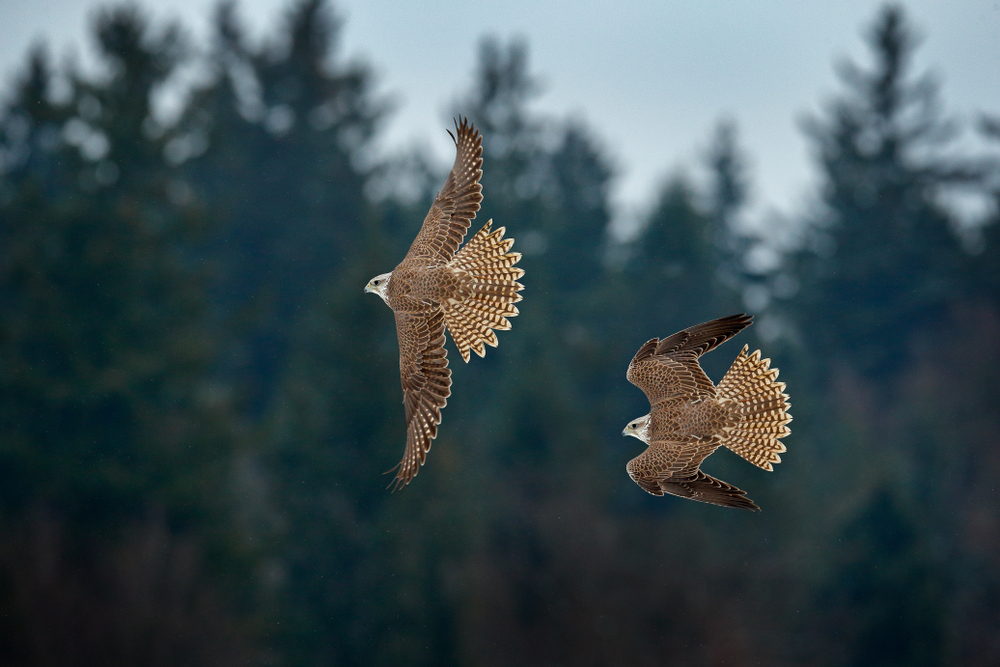
Just like eagles, Russia has its fair share of wild falcons. Though they may look similar to small eagles from a distance, falcons are notably different for attacking and killing prey with their beaks rather than sharp talons.
There are at least nine different species of falcon in Russia, along with a multitude of subspecies.
One of the most significant is the saker falcon. Known for its large size and attack power, the saker falcon has wide migration patterns across southern Russia and other parts of Eurasia.
The bird is also known for its rarity and dwindling numbers, and multiple Russian conservation groups are working to protect it.
Does Russia Have Any Official National Animals?

While Russia has not officially designated a national bird, the country has declared the Eurasian brown bear as its national animal.
Viewed as a strong symbol of cunning and power, the brown bear dominates modern Russian politics and patriotic emblems.
The brown bear was even adopted as the designated symbol of the country’s leading political party – the United Russia Party – which ran the nation for much of the early 2000s. Like the eagle and falcon, the bear has also appeared in Russian folklore.

